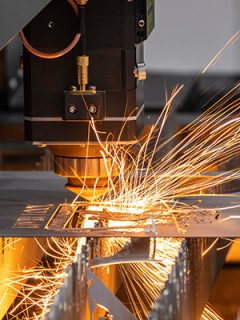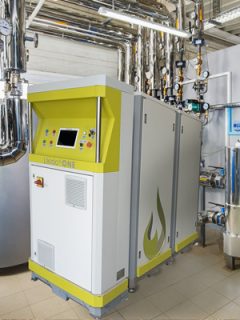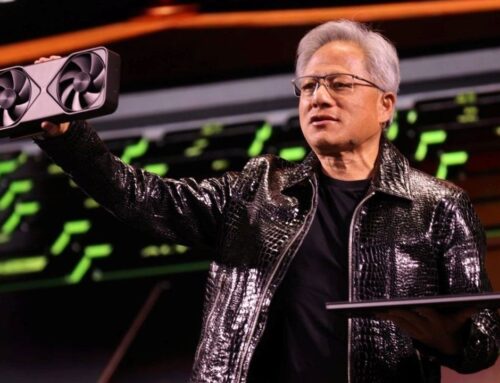Driving Clean Energy Transformation with Technology and Manufacturing
May 31, 2023
Driving Clean Energy Transformation with Technology and Manufacturing
By Brian Bonar, Dalrada CEO & Founder
Dalrada Corporation OTCQB:DFCO – www.dalrada.com
As the world looks for ways to reduce its carbon footprint and make the transition to sustainable energy sources, clean energy technologies are becoming more prevalent. And, many of these technologies rely on precision manufacturing processes in order to produce state-of-the-art components like microchips, and semiconductors for renewable energy power systems, making both technology and manufacturing essential in driving clean energy transformation.
Dalrada Financial Corporation‘s new facility in Livingston, Scotland, fosters a direct relationship between technology and manufacturing and drives both green and clean energy innovations. The 20,000-square-foot facility will serve as the new UK headquarters for Dalrada Technology Ltd., which specializes in developing clean energy manufacturing components, including semiconductors and related technologies. To achieve this, the facility will integrate two of our subsidiaries, Deposition Technology (DepTec) and Likido™. DepTec focuses on advancing precision microchip and semiconductor technologies, while Likido™ builds energy-efficient commercial heat pumps and industrial chillers. By combining new green technologies and more effective production methods, our manufacturers are actively contributing toward the global energy transition.
Precision Manufacturing and Clean Energy Technologies
The precision manufacturing industry is essential in developing clean energy technologies. With the production of high-quality, standardized devices such as wind turbines, solar panels, and batteries, green energy becomes more easily accessible and affordable. Because of their unique expertise in design, engineering, testing, and production processes, manufacturers are essential for driving innovation and ensuring that new products meet strict quality standards. In precision manufacturing, the slightest deviation from the design can mean the difference between a product’s reliability and its failure. Using advanced digital manufacturing techniques, manufacturers can design components with better reliability and durability, ultimately contributing to the industry’s long-term sustainability. Furthermore, without reliable parts from trusted manufacturers, these systems wouldn’t provide consistent power over time.
Commercial Heat Pumps and Energy Transition
Commercial heat pumps are a critical component in the transition to clean energy. They offer a remarkably high efficiency rate because, instead of generating heat like a furnace, they use electricity to transfer heat from a warm fluid to a cold fluid. They can also be used for cooling purposes, as they are functionally identical to an air conditioner, but in the case of heat pumps, waste heat can be recovered. As a result, heat pumps reduce emissions and reduce energy costs while allowing for the integration of renewable energy by using electricity generated from wind or solar power. Another benefit of heat pumps is that they produce cleaner indoor air because they don’t require combustion as traditional gas furnaces and boilers do.
Microchips, Semiconductors, and the Clean Energy Space
Microchips and semiconductors are vital for the advancement of new energy technologies. Believe it or not, the ability to control and manipulate the flow of electrons through semiconductors has revolutionized the renewable energy industry. Semiconductor-based solar panels are now widely used to generate energy. These “smart grids” monitor energy consumption and automatically adjust generation to optimize efficiency. And the efficiency of these panels continues to improve with advancements in semiconductor technology. Microchips and semiconductors are also used in electric vehicles, which are becoming increasingly popular as a cleaner alternative to traditional gasoline-powered cars. They allow electric vehicles to regenerate energy during braking, thus reducing overall energy consumption.
Technology and Manufacturing: Adapting for a Greener Future
Technology and manufacturing are working together to drive the development of sustainable energy solutions. As technologies continue to advance, they will become more affordable and accessible, hastening the transition to clean energy. For instance, technological advancements in manufacturing have already led to the availability of cost-effective energy alternatives like wind and solar power. Additionally, improvements made in material science and engineering have made it possible to use raw material more efficiently, reducing waste and energy consumption during production processes. As manufacturing processes continue to digitize, advanced software applications can reduce the need for human intervention and increase manufacturing precision.
Conclusion
The technology and manufacturing industries are positioned to lessen the challenges associated with green energy production while accelerating its advancement. Clean energy technologies rely on precision manufacturing processes for large-scale production, custom parts, microchips, and semiconductors for clean energy systems. Also, technological advancements increase efficiency, reduce costs, and improve access to more sustainable energy sources. As we work toward creating a sustainable future, technology and manufacturing together will benefit consumers, businesses, and governments around the world as we continue to minimize our impacts on the environment.
|
|
Search
RECENT PRESS RELEASES
Related Post








